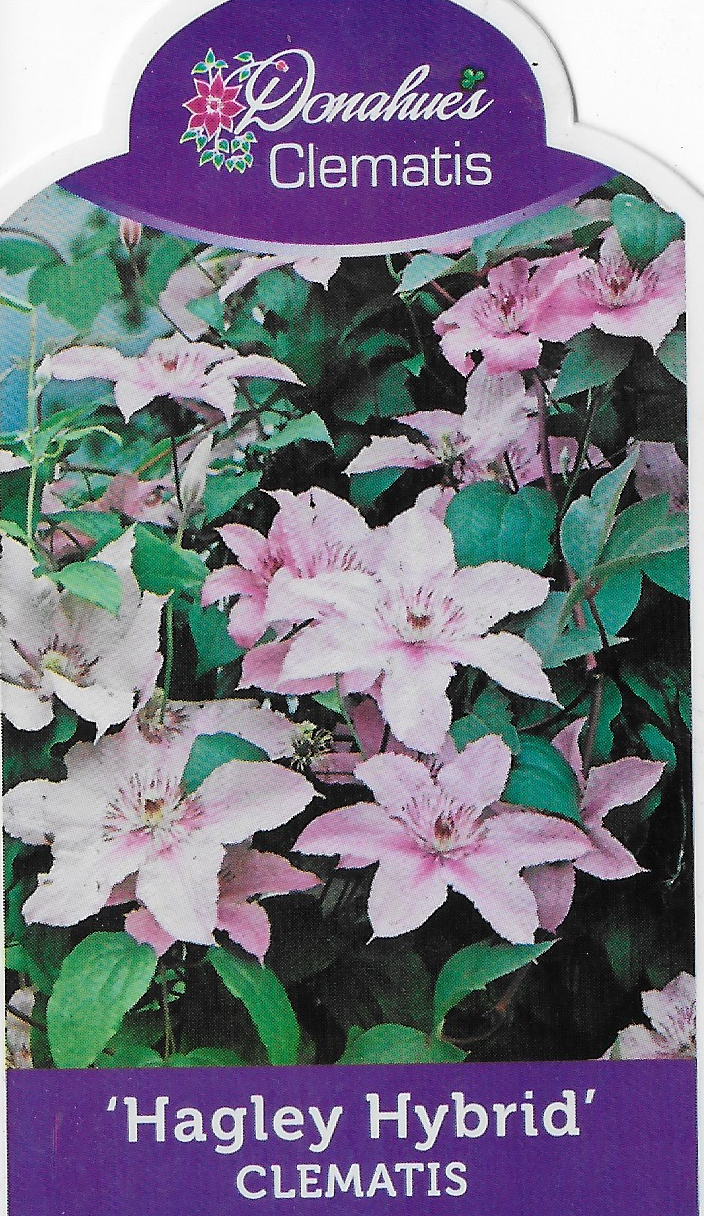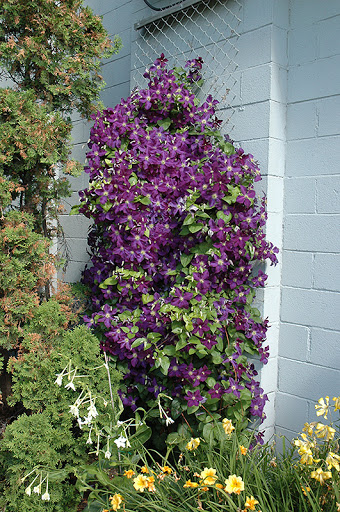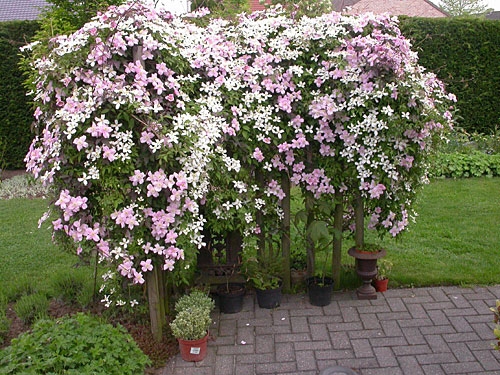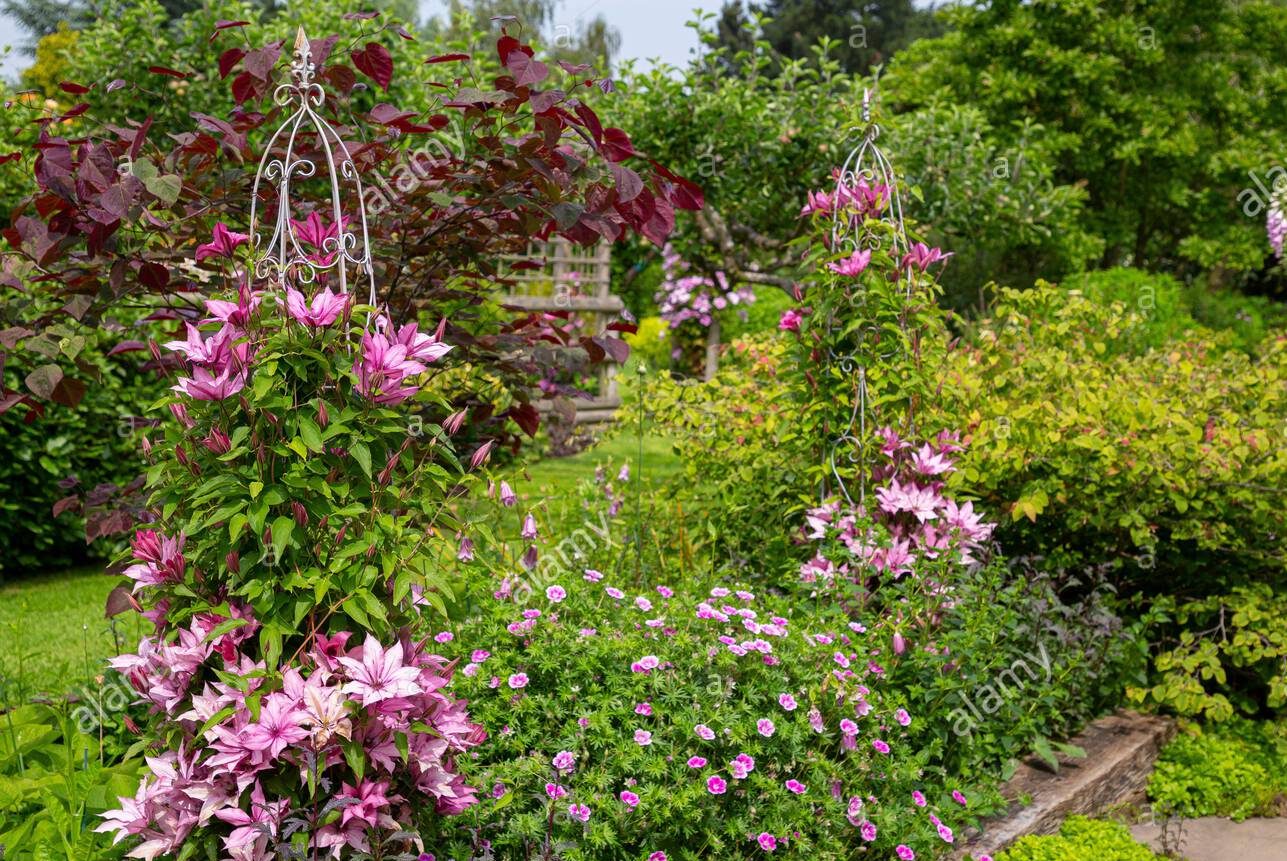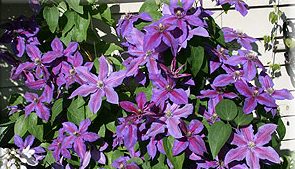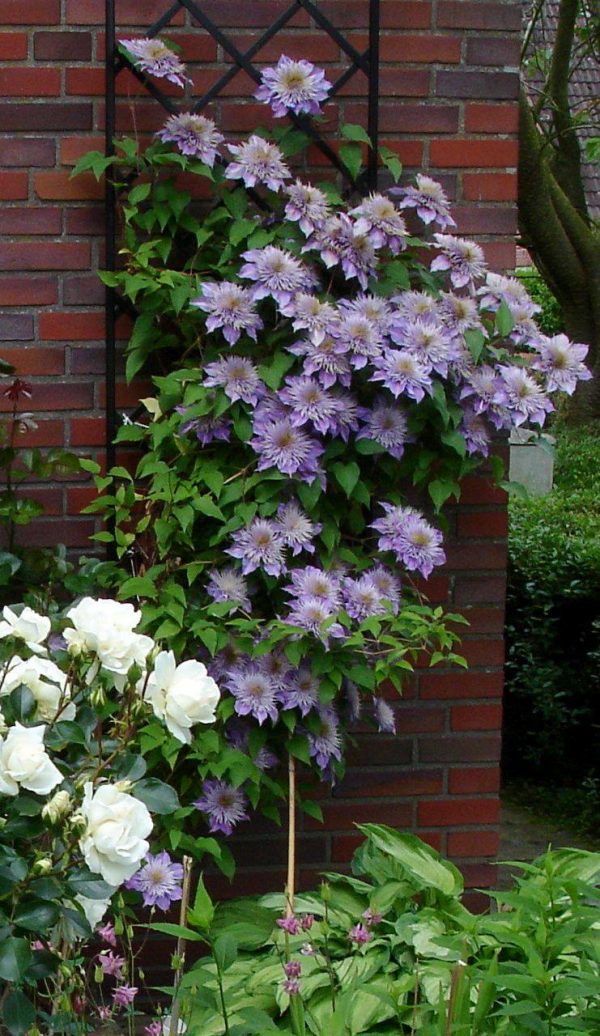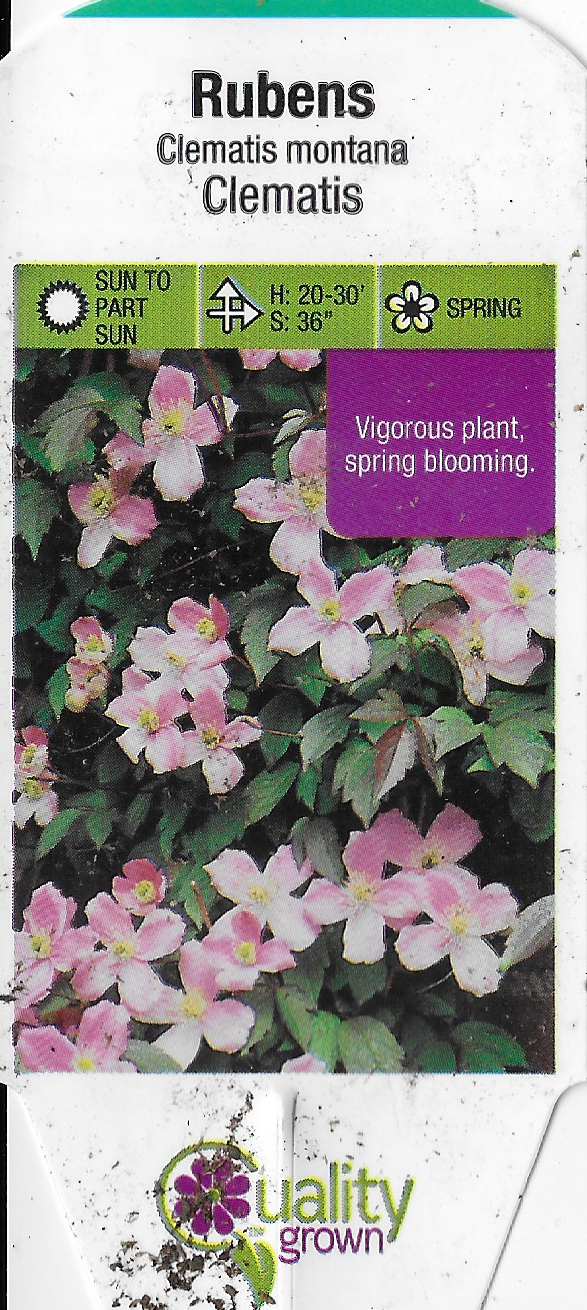 Print This Post
Print This Post
Hagley
rogue cardinal
2020
What are my clematis?
The 20 year old. might be ‘Jackmanii’
prune type 3 in spring removing all dead
blooms on new wood
The 3 month old. Montana rubens
prune type 1
first year cut back to 12″
blooms on old wood
new April 2020
Henryi
White. 6 to 8 petals. Average diameter 7″. Single, semi-double, overlapping bloom form. Late spring to early summer, late summer to early autumn.
USDA 4b to 9b. Plant in sun or partial shade.
It blooms on the previous year’s growth, so resist the urge to prune it in early spring.
Common Name: clematis
Type: Vine
Family: Ranunculaceae
Zone: 4 to 8
Height: 6.00 to 8.00 feet
Spread: 3.00 to 6.00 feet
Bloom Time: June
Bloom Description: Creamy white with brownish anthers
Sun: Full sun to part shade
Water: Medium
Maintenance: Low
Flower: Showy
Tolerate: Deer, Black Walnut
Garden locations
Culture
Grow in fertile, medium moisture, well-drained soils in full sun to part shade. Vining hybrids are best sited in locations where the flowering parts of the vine are in sun to part shade but the roots are shaded. Some light afternoon shade is usually beneficial in hot and humid summer climates such as the St. Louis area. Clematis vines need a trellis or other support on which to grow. Roots should be kept cool, shaded and uniformly moist. Root areas may be shaded with perennials, annuals or small shrubs. A thick root mulch is appreciated. Do not allow soils to dry out.
‘Henryi’ is pruned as Group 2.
Giselle
Clematis ‘Giselle’ is a compact, deciduous climber which produces masses of large, star-shaped, rosy-pink owers, up to 5 in. wide (12 cm). Blooming from late spring until autumn .
★ Thrives in moist, well-drained soils, in bright shade.
★ Hardy, it is incredibly free-owering and can quickly grow up to 100-150 cm.
★ This Clematis belongs to the third group of Clematis – a group including Clematis which flower in late summer on growth made in that season. They should be pruned in late winter or early spring and require ‘hard pruning’: simply cut back the stems to a pair of strong buds about 1ft. (30 cm) above ground level before growth begins in early spring. 5
Rubens / Montana
In late spring, glowing, deep pinkish-purple dogwood-like flowers smother this vigorous clematis. Each 4-inch bloom sparkles with a tuft of yellow at its center. These flowers are the largest of all montanas and bear a deliciously sweet fragrance at maturity. As flowering peaks, smoky bronze foliage overtakes the fading blooms. The foliage matures to a deep, dark green color for the summer.
Foliage Type: deciduous
Plant Height: 30 ft. 0 in. (9.14 meters)
Plant Width/Spread: 15 ft. 0 in. (4.57 meters)
Hardiness: USDA Zones 5 to 9
Flower Color: pink
Sun/Light Exposure: light to open shade or full sun – but avoid hot, reflected heat!
Water Requirements: occasional watering
This vigorous clematis is a large grower and requires plenty of space to spread. It will grow best in light or open shade or full sun if the location is not a hot spot. Provide a site with rich well-drained soil where it can be occasionally watered during dry weather. Plant vines that are well rooted and at least two years old. In our climate planting too deeply can smother the roots. Set young plants at the same depth they were in their nursery pots. Clematis are heavy feeders and appreciate fertilizing in spring. This clematis blooms on one year old stems so prune lightly in late winter, only removing congested or tangled growth or if heavy pruning is required do it immediately after flowering in spring.
Mrs N Thompson
Medium to large deep violet to bluish purple flowers with a red bar. Purple-red anthers on pale pink stamens. Named after the wife of Mr N Thompson, Pennell’s nursery office manager.
Group: Early large-flowered group
Approximate height: infodot 2.0 – 2.5 metres
Flowering period(s): infodot May Jun Aug Sep
Aspect: Any aspect
Pruning: Light prune (Group 2)
Raised by: Walter Pennell
Country of origin: United Kingdom
Date raised: infodot rc1954 n1961
Parentage: infodot Unknown
Other name(s): Wrongly: ‘Mrs N Thomson’, ‘Mrs Norm Thomson’, ‘Mrs Thomson’
Further detail: infodot
Flower diameter: (10-) 12-17cm
Tepals: (4-) 6 (-8); 6-7.5cm long, 2.4-3.4cm wide, elliptic, pointed, overlapping, margin twisted and irregularly wavy
Crystal Fountain
Type: Vine
Family: Ranunculaceae
Zone: 4 to 8
Height: 6.00 to 8.00 feet
Spread: 2.00 to 3.00 feet
Bloom Time: May to September
Bloom Description: Violet blue
Sun: Full sun to part shade
Water: Medium
Maintenance: Low
Flower: Showy
Attracts: Butterflies
Tolerate: Rabbit, Deer, Black Walnut
Garden locations
Culture
Grow in fertile, medium moisture, well-drained soils in full sun to part shade. Vining hybrids are best sited in locations where the flowering parts of the vine are in sun to part shade but the roots are shaded. Some light afternoon shade is usually beneficial in hot and humid summer climates such as the St. Louis area. Clematis vines need a trellis or other support on which to grow. Roots should be kept cool, shaded and uniformly moist. Root areas may be shaded with perennials, annuals or small shrubs. A thick root mulch is appreciated. Do not allow soils to dry out.
CRYSTAL FOUNTAIN is pruned as Group 2. See pruning instructions below.
native:
Clematis virginiana
Clematis pitcheri
Group 1 – Flowers only on old wood (previous year). Prune after spring flowering.
Group 2 – Flowers on both old and new wood. Typically, little pruning should be done for woody-stemmed members of this Group. If cut to the ground or pruned in fall or spring, flowering will be reduced or delayed but not prevented.
Group 3 – Flowers only on new wood. Can be cut to the ground in fall or spring.
TYPES AND VARIETIES: Clematis are divided into evergreen and deciduous plants and most species can be divided into three groups; Early-Flowering species, Mid-Season species and Late-Flowering species.
Propagating
https://empressofdirt.net/grow-clematis-cuttings/
Two-year old+ clematis vine.
Plastic bag with warm, damp paper towel.
3″ pot with good quality potting soil.
Drip tray to hold the pots.
Rooting hormone and small dish to pour it in.
Fine, sharp cutting knife (I like a scalpel) and cutting board.
Rubbing alcohol to clean your blade.
Plastic Ziplock bags (food bags) large enough to cover each pot without touching the cutting.
Chopsticks or similar item to support Ziplock bags.
Decide how many cuttings you want to prepare and get the pots ready.
Place potting mix in 3-inch pots, water thoroughly, top up with mix, and water again.
Set pots on a drip tray and have a chopstick and clear food bag ready for each pot.
Clean your scalpel or fine cutting knife with rubbing alcohol.
Have your rooting hormone and cutting board ready.
Dampen a clean rag or paper towels with warm water and place in a plastic Ziplock bag.
Go to the garden and decide which stem or stems will be your cuttings.
If you can, find a 3-foot stem on the mother plant. It’s okay if it’s not that long, and longer is fine too. Ideally, it does not have any flowers on it.
Examine the stem before you cut.
You’ll notice that toward the base of the plant, the stem is woodier, perhaps brown or turning brown.
The tips where new growth is occurring are the greenest parts.
We’re going to take a long piece of stem and then divide it into several cuttings (and, we hope, several new plants).
Don’t take your cutting unless you are ready to get them potted right away.
To take the cutting, cut just above a leaf joint (the part of the stem where two leaves grow from).
Immediately place the cut end between warm, damp paper towels, and place that end in the bag. We’re trying to reduce the shock to the cutting.
Cut the shoot in the 3 locations shown below.
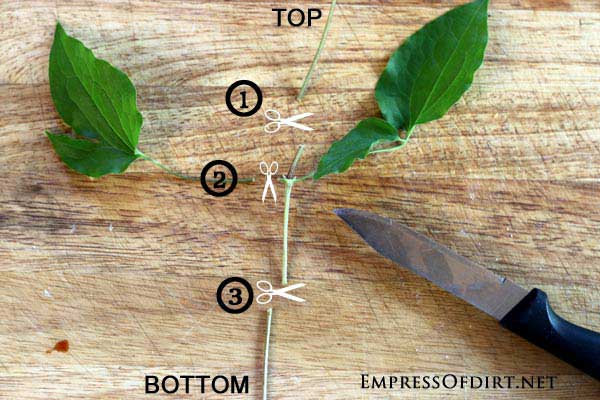
Lay your plant down as shown here to see where to cut next.
Clean your scalpel (or fine cutting knife) again before proceeding. Otherwise, it’s way too easy to spread disease.
I show a knife in the photo because I couldn’t find my favorite scalpel when I was taking the photo.
Place the cutting on a cutting board.
Put the top of the vine (the green end) at the top of the cutting board.
Start at the first leaf joint from the bottom.
Cut 1-inch ABOVE the leaf joint (#1 in the image above).
Cut OFF the leaf on the left side (#2 in the image above).
Cut 2-inches BELOW the leaf joint (#3 in the image above).
That’s your first piece for propagation.
You can usually get several pieces like this one from a 3-foot piece of vine but don’t use the very green tips – they’re too young to grow roots.
Using rooting hormone to grow clematis cuttings.
Always use a dish to apply rooting hormone, not the original container.
Place small amount of rooting hormone in clean dish, dip stem in powder, tap off excess.
To avoid contamination, avoid dipping directly in the rooting hormone container.
Use a dibber (or chopstick) to make an insertion hole in the potting mix for each cutting.After adding rooting hormone, place the cuttings in potting soil.
Insert cutting into 3″ pot (with potting soil), leaning it against the inner side of the pot.
Cover stem (the part with rooting hormone on it) with potting soil, pressing lightly to remove any air pockets.
You can put 4 of these prepared cuttings in one pot: one against each inner side.
Clematis soil or growing medium needs to be kept moist but not damp.
I had you water the soil when you prepared the pots, but do it again if needed.
The growing medium should be damp enough to stay in ball if you squeezed a handful, but not so wet that it drips water.
Make sure contents remain moist and do not dry out.
Check your plants every day to ensure moisture is consistent (not too much, not too little) and it’s not too musty or mold and mildew may form.
New Roots Forming
In approximately 2-4 weeks, you should see new roots forming. That’s when it’s time to put the plants in individual pots.
The simplest way to test for new root growth is to look at the holes in the bottom of the pot and see if anything is growing there.
Alternately, very gently pull on the plant from the base near the soil. If you feel the roots are ‘grabbing’ the soil (i.e. there is some resistance to your pull), that’s a good sign. Any new growth above soil level also indicates the plant is growing as desired.
When repotted, give them time to grow bigger and then either plant them out well ahead of fall frost, or, if you have adequate grow lights, keep them indoors until spring.

